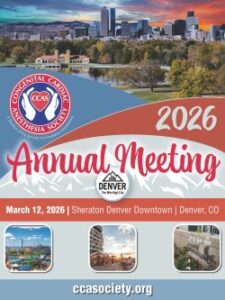Author: Melissa Colizza, MD - Stollery Children's Hospital, University of Alberta, Edmonton, Canada
A 5-month-old girl with Noonan syndrome and confirmed RIT1 mutation presents with failure to thrive. A transthoracic echocardiogram demonstrates biventricular hypertrophy with a peak subaortic gradient of 88 mmHg. Which of the following medications is MOST likely to produce regression of the underlying pathology?
EXPLANATION
Noonan syndrome (NS) is a classic example of “RASopathy,” a family of genetic conditions characterized by the activation of rat sarcoma (RAS)virus protein/mitogen-activated protein kinase (MAPK) cascade. RASopathies result in “gain-of-function” germline mutations and lead to congenital anomalies and a predisposition to malignancy. Typical clinical features involve a short stature, abnormal facies, congenital heart defects, developmental delay, lymphatic abnormalities, bleeding tendencies, and skeletal anomalies. Other RASopathies include Costello syndrome, cardiofaciocutaneous syndrome, and Legius syndrome. A plethora of responsible genes have been identified, including SOS1, RIT1, KRAS, RAF1and PTPN11. Approximately half of NS patients carry a mutation in the PNPT11 gene, which is more likely to be associated with the development of pulmonary valve stenosis. While overall, about 20% of NS patients have hypertrophic cardiomyopathy (HCM), 95% of individuals with RAF1 mutations, and 75% with RIT1 mutation have HCM. Animal models have shown a correlation between the strength of RAS/MAPK signaling and the severity of manifestations. Mild to moderately increased activation from germline mutations will result in RASopathy, whereas moderate to severely increased activation stemming from somatic mutations will result in neoplastic disease.
Roughly 80% of RASopathy patients will suffer from a cardiac anomaly, pulmonic valve stenosis being the most common. Approximately 22-29% will develop hypertrophic cardiomyopathy (HCM). As the pathology arises from a gain-of-function mutation, myocardial hypertrophy tends to be more severe and rapidly progressive than other forms of HCM and carries a poorer prognosis, with a 1-year survival of 34% in infants less than six months of age with severe obstruction and heart failure. Since mutations of the RAS/MAPK pathway are the most common cause of human neoplasia, its inhibition has been the target of extensive research and resulted in the use of several mitogen-activated protein/extracellular signal-regulated kinase (MEK) inhibitors such as trametinib, cobimetinib, and selumetinib. Animal models have subsequently shown that some RASopathy clinical features, including cardiac hypertrophy, may be altered by MEK inhibitors (MEKi). A case report by Andelfinger et al. described the compassionate use of trametinib in two NS infants with RIT1 mutations and severe, rapidly progressive HCM despite aggressive medical management. The authors noted a regression of the hypertrophy, as well as an improvement in clinical status and biological markers within four months following the initiation of therapy. Patients remained on trametinib for three and a half years before successful weaning. Other publications also report the effectiveness of MEKi in RASopathy-related HCM or lymphatic disease. In a review by Chaput and Andelfinger, the authors suggest the MEKi drugs should only be used in the context of a confirmed gain-of-function mutation of the RAS/MAPK pathway in consultation with RASopathy specialists. The authors also highlight the fact that no single molecule would apply to all RASopathy patients, nor would one address all clinical manifestations in a single patient.
While promising, the use of MEK inhibitors in RASopathies remains experimental, and most patients with HCM will be treated with conventional medical treatment, including beta-blockers, calcium channel blockers, and disopyramide. Beta-blockers reduce myocardial contractility and heart rate, thereby decreasing the dynamic subvalvular gradient and improving ventricular filling and ejection. Beta-blockers have been shown to decrease mortality in HCM. While some authors hypothesize that they might induce ventricular remodeling, beta blockers will not reverse the molecular process in the context of RASopathies. Calcium channel blockers may also be used as a treatment but have not been shown to decrease mortality or reverse underlying hypertrophy.
The correct answer is B. Trametinib is a mitogen-activated protein/extracellular signal-regulated kinase (MEK) inhibitor that has been demonstrated to reverse the myocardial hypertrophy associated with NS. Propranolol and amlodipine provide symptomatic relief but do not alter the underlying pathological process.
REFERENCES
Andelfinger G, Marquis C, Raboisson MJ, et al. Hypertrophic cardiomyopathy in Noonan syndrome treated by MEK-inhibition. J Am Coll Cardiol. 2019;73:2237-9.
Chaput D, Andelfinger G. MEK Inhibition for RASopathy-Associated Hypertrophic Cardiomyopathy: Clinical Application of a Basic Concept. Can J Cardiol. 2024;40(5):789-799. doi:10.1016/j.cjca.2024.02.020
Saint-Laurent C, Mazeyrie L, Yart A, Edouard T. Novel therapeutic perspectives in Noonan syndrome and RASopathies. Eur J Pediatr. 2024;183(3):1011-1019. doi:10.1007/s00431-023-05263-y
Östman-Smith I. Beta-Blockers in Pediatric Hypertrophic Cardiomyopathies. Rev Recent Clin Trials. 2014;9(2):82-85. doi:10.2174/1574887109666140908125158
